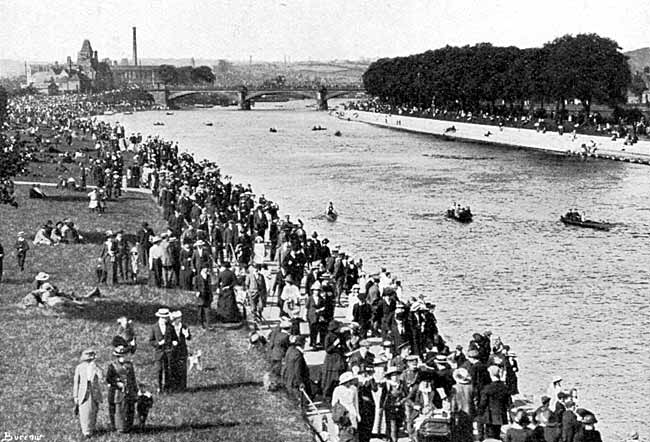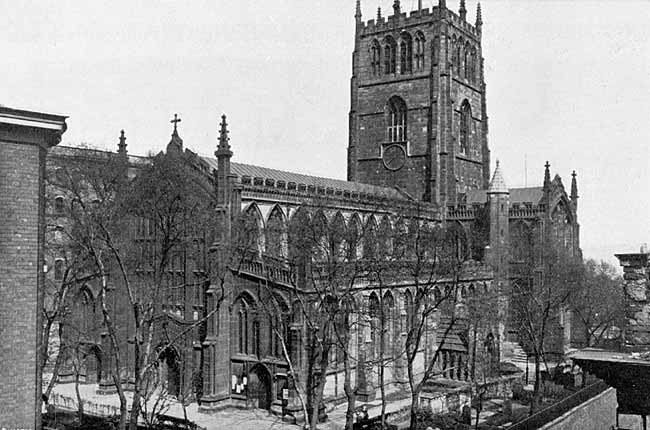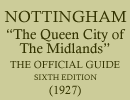OTHER PLACES OF INTEREST.
Nottingham is proud of its Great Market Place—the largest in England and covering nearly five acres. In the olden days it had its pillory, stocks and ducking stool. To-day tramways radiate from it to all parts of the city. It still attracts animated crowds at the Saturday market and at the October Goose Fair, which is no longer a market but a merry-making.
Some of the most important shops in the city are to be found in the Long Row, on the north side of the Market Place. In Angel Row, on another side of the Market Place, there is an early 18th century house— Bromley House—with some fine decorative work in wood and plaster. It houses a subscription library— a splendid collection of books, including many rarities, but it is not open to the general public.
A few other ancient houses of picturesque character have escaped the drastic changes brought about by Nottingham's rapid growth in modern times, one of the best examples being the old half-timbered inn called "The Flying Horse," just off the Market Place.
In front of the Prudential Assurance Offices at the junction of King Street and Queen Street is the memorial to Nottingham men who fell in the Boer War.
Opposite St. Andrew's Church is the beautiful Church Cemetery, where some of the old caves peculiar to Nottingham may be found. Some of these curious features also exist in the residential district known as the Park, which was formerly the haunt of red deer, but the caves are now included in private grounds and permission must be obtained before they can be inspected.
The Victoria Embankment (see page 43) extending round a fine curve of the River Trent for a distance of one and a quarter miles, forms an attractive riverside promenade, absolutely unique for an inland city. A flight of steps descends to the water's edge along the whole length of the embankment, which is bordered on the other side by shrubs, trees and well-kept greensward.

Victoria Embankment, Nottingham.
It may be fittingly mentioned here that the important and much-needed scheme for the widening of Trent Bridge has now been completed, with the exception of the Radcliffe Road corner. The bridge has been widened to 80 feet, and was opened for traffic in April, 1926. The improvement was carried out without interfering with the original design of the bridge as seen from either side.
CHURCHES.
The city is graced by many beautiful buildings devoted to divine worship. There are no fewer than twenty- seven Established Churches, many of them possessing architectural features of much distinction.
The Parish Church of St. Mary the Virgin dates from the fifteenth century. It is 210 feet long, and has a massive central tower, with a battlemented parapet. Few churches possess such magnificent windows as those in the transepts and west end of this building, and on entering from the south porch one is impressed with the great beauty of the interior, and especially with the ceiling of oak under the tower. Many interesting monuments will attract attention; also the window in the east end which commemorates the Prince Consort.

St. Mary's parish church.
The Parish Church of SS. Peter and Paul (which is usually called St. Peter's) is the oldest in the city, but cannot compare with St. Mary's in beauty or size. The third oldest parish is St. Nicholas, where is a church built in 1682 to replace one destroyed during the Civil War.
There are, besides, four Roman Catholic churches, nearly fifty Nonconformist places of worship, and many representing other shades of religious belief.
